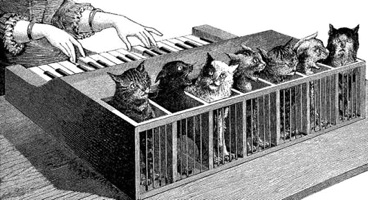I must admit: I haven’t a clue as to how the whole Disney-acquires-Pixar thing is going to work out, but I do know one thing: it’s probably good that John Lasseter will be helping out on the whole theme park thing for Disney. The one thing that the Disney parks seem to have suffered from over the last couple of decades is story and imagination, and I can’t help but think that JL will bring a fresh (and desparately needed) perspective on the Disney theme parks.
Along that line, try checking out the Re-Imagineering blog. Their charter?
A forum for Pixar and Disney professionals passionate about the Disney Theme Parks to catalog past Imagineering missteps and offer up tenable practical solutions in hopes that a new wave of creative management at Imagineering can once again bring back the wonder and magic that’s been missing from the parks for decades. ‘
Amen brothers. I actually really like Disneyland and even like California Adventure, but they fall well short of the promise of Walt’s original vision, and the commentators on this blog have practical, thoughtful discussions of how the parks could retain their original charm and glory. I’m adding it to my daily read list.
[tags]Disney,Pixar,Imagineering,Disneyland,Disneyworld[/tags]


 Juan Buhler (former SIGGRAPH sketch chair, current Pixarian, and cool street photographer) sent me a
Juan Buhler (former SIGGRAPH sketch chair, current Pixarian, and cool street photographer) sent me a